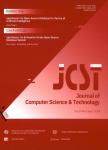The Memory-Bounded Speedup Model and Its Impacts in Computing
作者机构:Department of Computer ScienceIllinois Institute of TechnologyChicago 60616U.S.A.
出 版 物:《Journal of Computer Science & Technology》 (计算机科学技术学报(英文版))
年 卷 期:2023年第38卷第1期
页 面:64-79页
核心收录:
学科分类:08[工学] 0812[工学-计算机科学与技术(可授工学、理学学位)]
基 金:supported in part by the U.S.National Science Foundation under Grant Nos.CCF-2029014 and CCF-2008907
主 题:memory-bounded speedup scalable computing memory-wall performance modeling and optimization data-centric design
摘 要:With the surge of big data applications and the worsening of the memory-wall problem,the memory system,instead of the computing unit,becomes the commonly recognized major concern of ***,this“memorycentriccommon understanding has a humble *** than three decades ago,the memory-bounded speedup model is the first model recognizing memory as the bound of computing and provided a general bound of speedup and a computing-memory trade-off *** memory-bounded model was well received even by *** was immediately introduced in several advanced computer architecture and parallel computing textbooks in the 1990’s as a must-know for scalable *** include *** Hwang’s book“Scalable Parallel Computingin which he introduced the memory-bounded speedup model as the Sun-Ni’s Law,parallel with the Amdahl’s Law and the Gustafson’s *** the years,the impacts of this model have grown far beyond parallel processing and into the fundamental of *** this article,we revisit the memory-bounded speedup model and discuss its progress and impacts in depth to make a unique contribution to this special issue,to stimulate new solutions for big data applications,and to promote data-centric thinking and rethinking.



